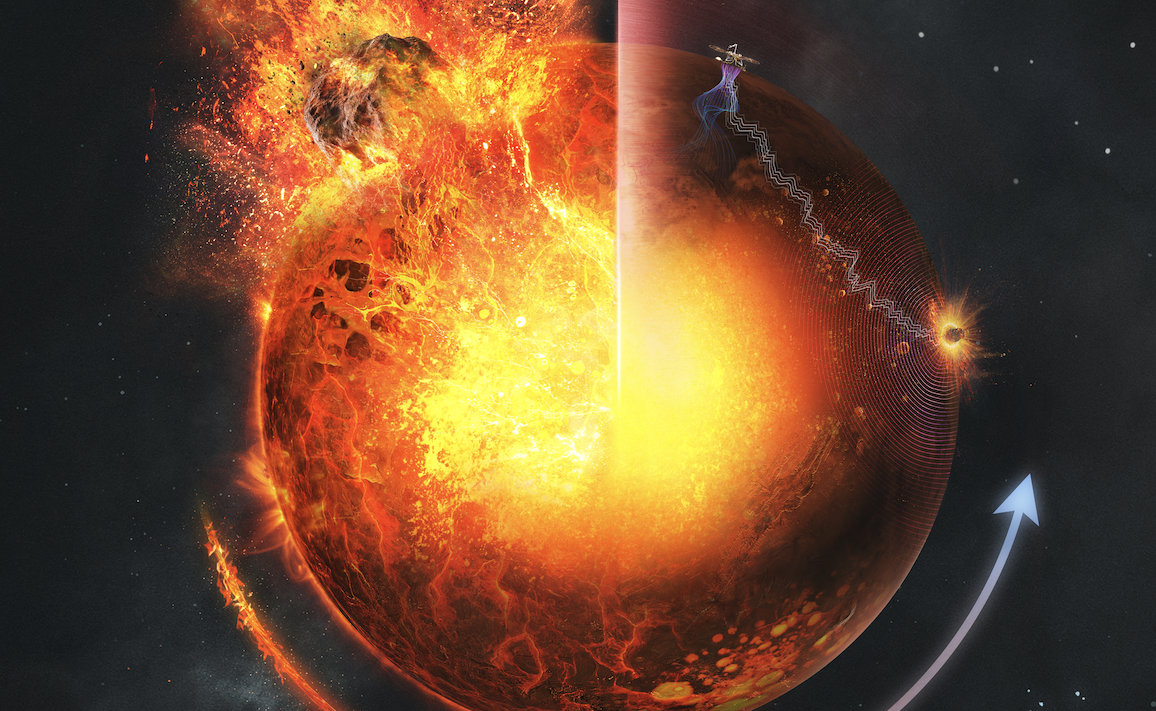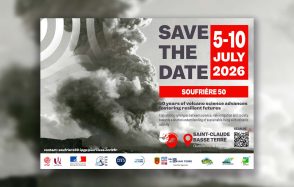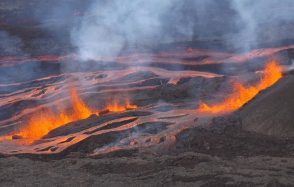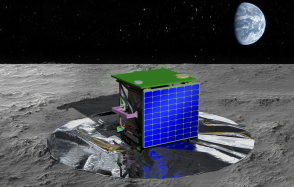Ancient heterogeneous fragments distributed beneath the surface
By studying eight high-frequency marsquakes, researchers identified anomalies in the propagation of unusually slow seismic waves, revealing the presence of 1–4 km-wide heterogeneities within the mantle that “slow down” seismic waves when they encounter these kilometer-scale fragments. Tracing back in time, the researchers concluded that these heterogeneities, whose size has progressively decreased over time, originated from very ancient processes, possibly linked to asteroids colliding with Mars in the early Solar System.
When striking the planet’s surface, these asteroids may have generated magma oceans whose solidification created compositional heterogeneities. Such impacts could also have carried ancient fragments of crust and lithosphere deep into the mantle. On Earth, plate tectonics continuously recycles oceanic crust and lithosphere, gradually mixing them with other ancient heterogeneities through convection. On Mars, however, where plate tectonics is absent and mantle convection is weaker, this permanent recycling does not occur, and mixing is less efficient. The survival of these fine-scale structures, still detectable today, demonstrates that Mars has not undergone the same evolution as our planet.
“We had never observed the interior of a planet with such detail,” explains Constantinos Charalambous (Imperial College). “Mars’ mantle is scattered with ancient fragments, whose preservation reflects the planet’s slow and subdued evolution.”
“The survival of these fragments after several billion years of convective stirring also provides valuable insights into the rheology of the Martian mantle,” adds Henri Samuel, CNRS researcher (IPGP/UPC) and co-author of the study. “Mars’ mantle appears to be more rigid than Earth’s, limiting deformation and mixing of ancient heterogeneities.”
“These results confirm that Mars preserves a unique geological memory, while Earth, with its active tectonics, has erased similar traces of its past,” notes Thomas Pike (Imperial College), co-author of the study.
The contribution of French and European teams
Deployed on Mars’ surface in 2018, SEIS (Seismic Experiment for Interior Structure) recorded 1,319 marsquakes before the mission ended in December 2022. This ultra-sensitive instrument was provided by CNES to NASA, with scientific responsibility entrusted to Philippe Lognonné (IPGP).
These new observations highlight the scientific wealth still contained in the InSight data:
“Discovery after discovery, Mars stands out with an internal structure very different from Earth’s. And by comparing terrestrial planets, we can only recognize Earth’s uniqueness,” emphasizes Philippe Lognonné, Professor at Université Paris Cité and co-author of the study.
Sources
Seismic evidence for a highly heterogeneous Martian mantle
C. Charalambous, W. T. Pike, D. Kim, H. Samuel, B. Fernando, C. Bill, P. Lognonné, W. B. Banerdt, Science, 2025
https://www.science.org/doi/10.1126/science.adk4292










